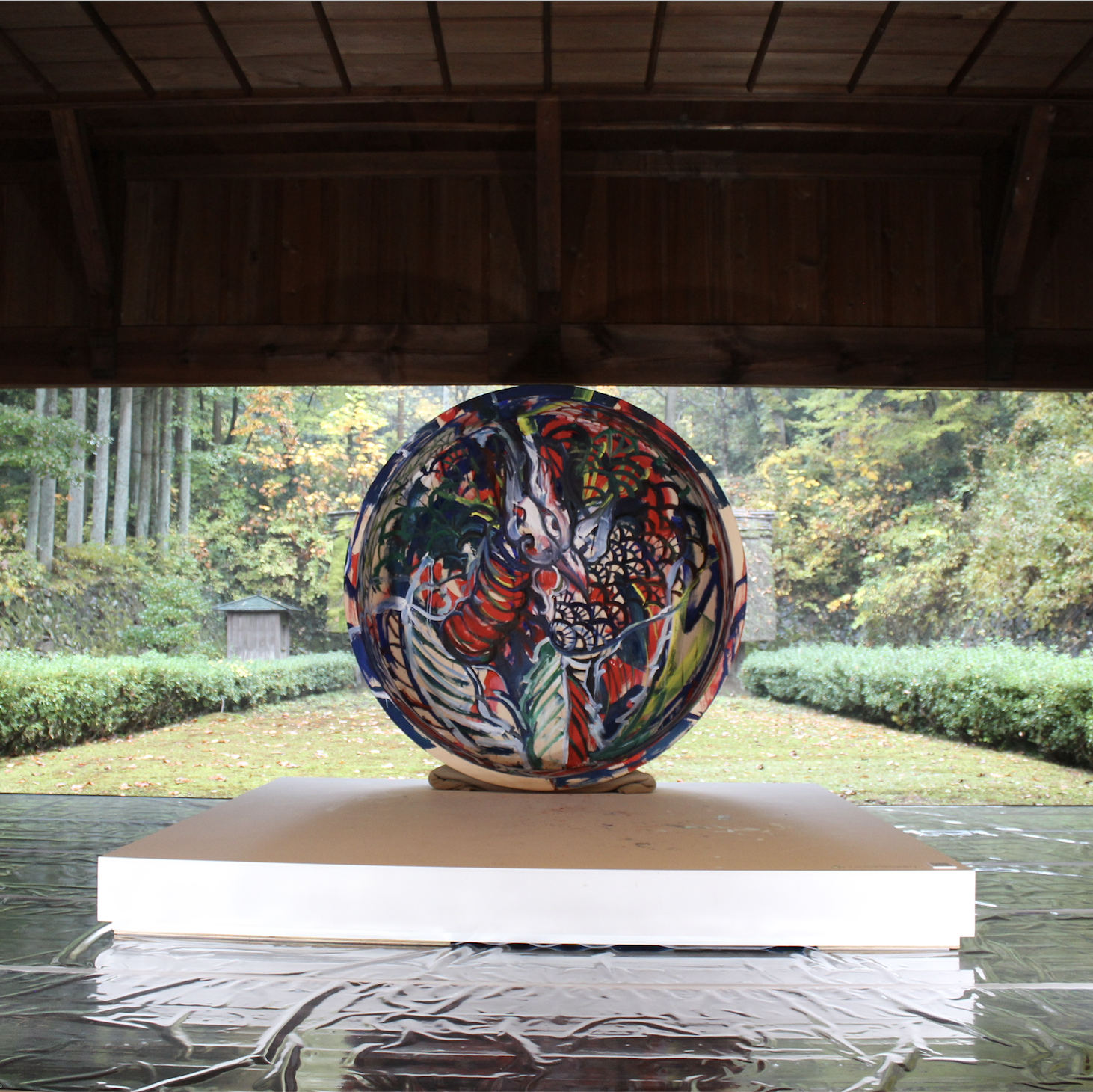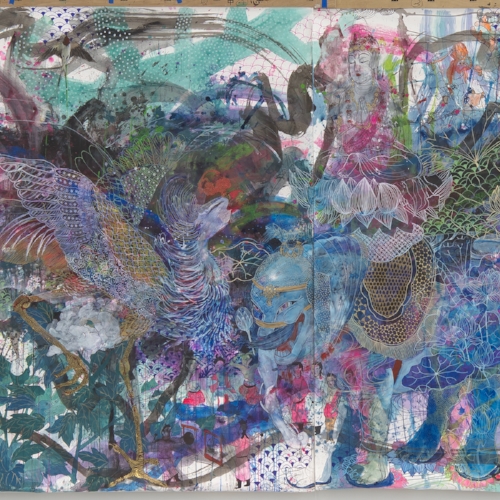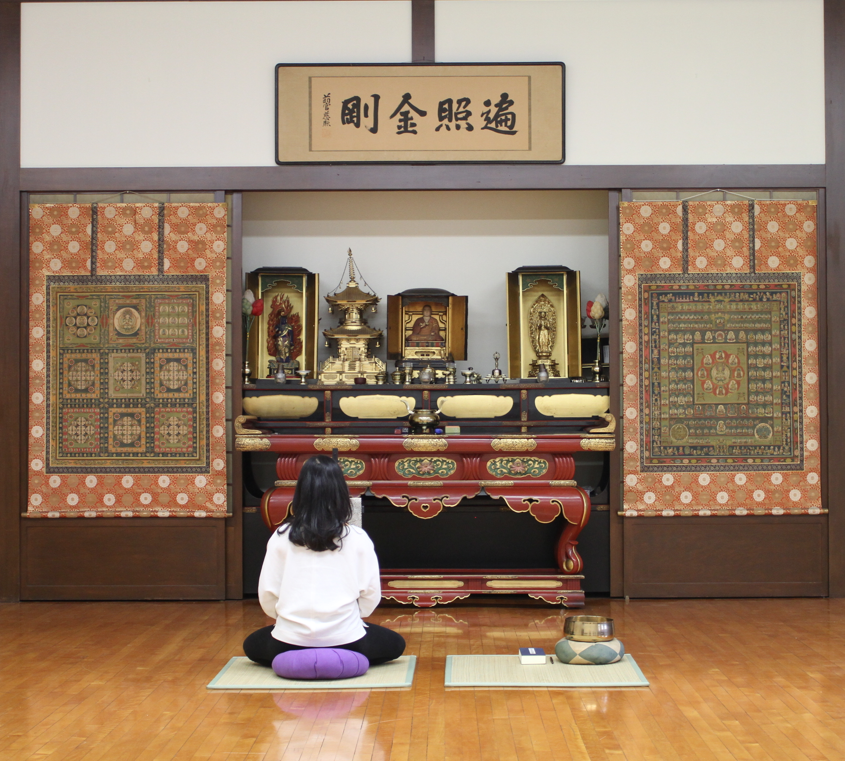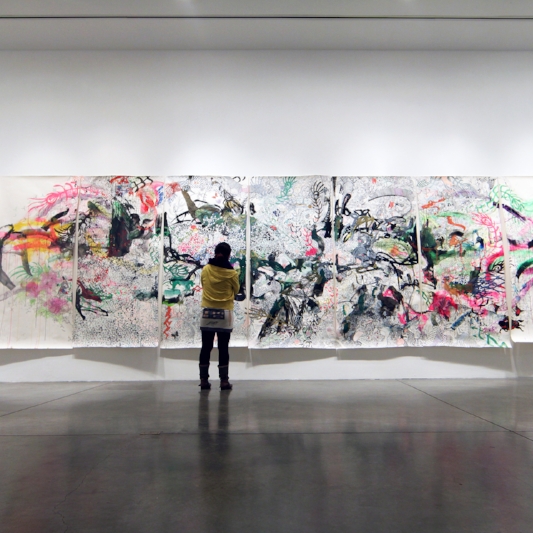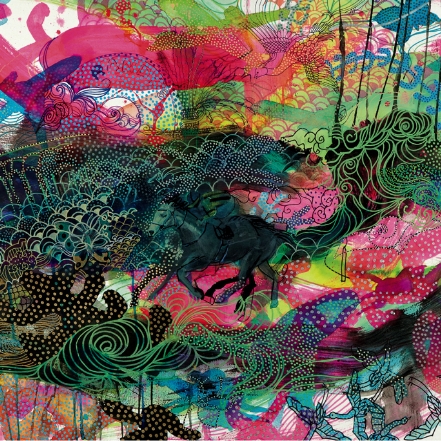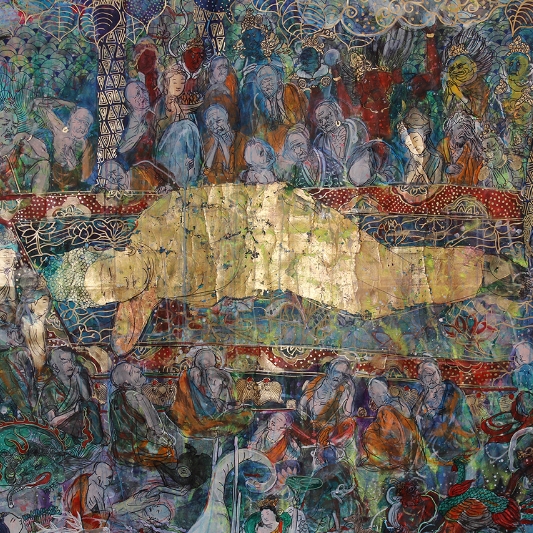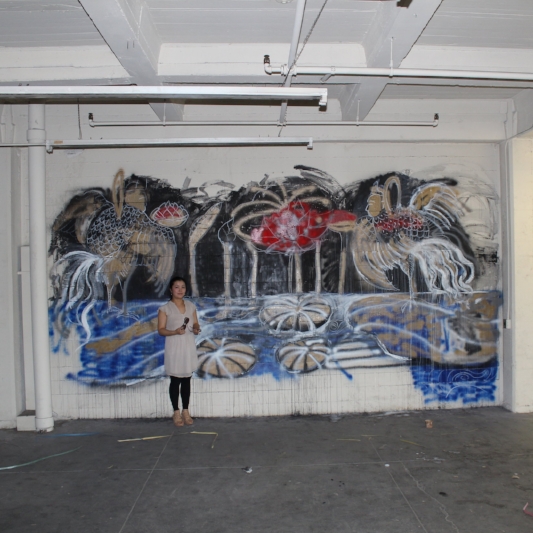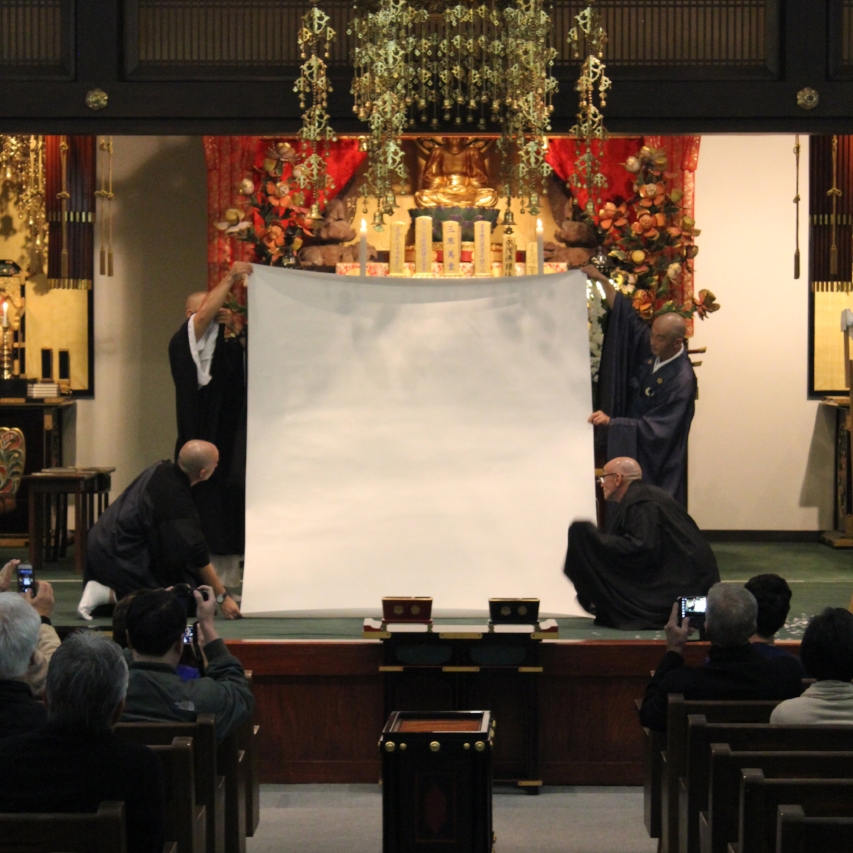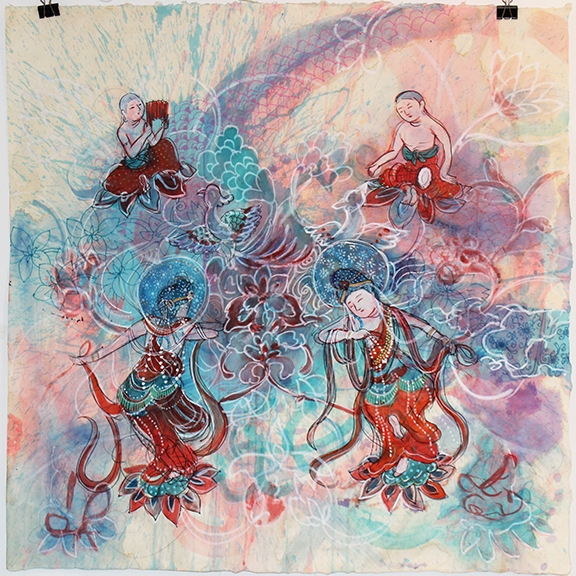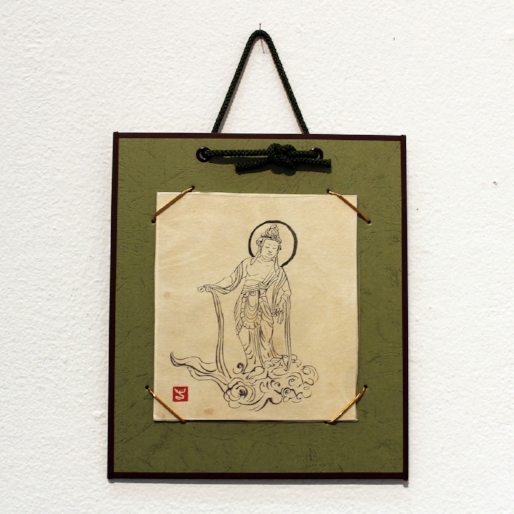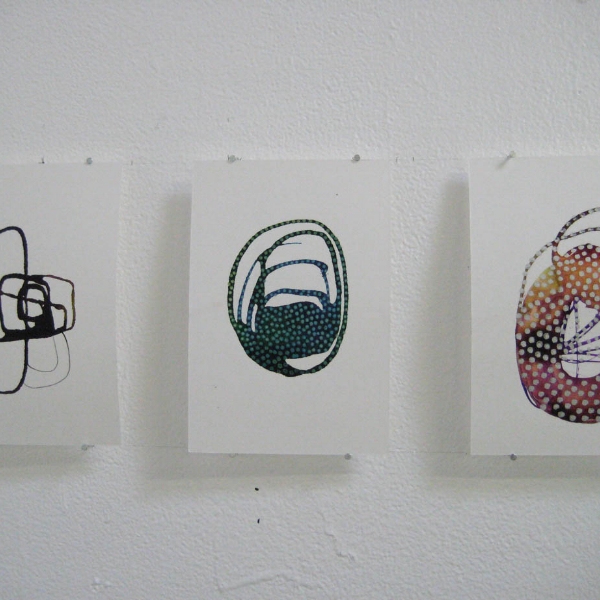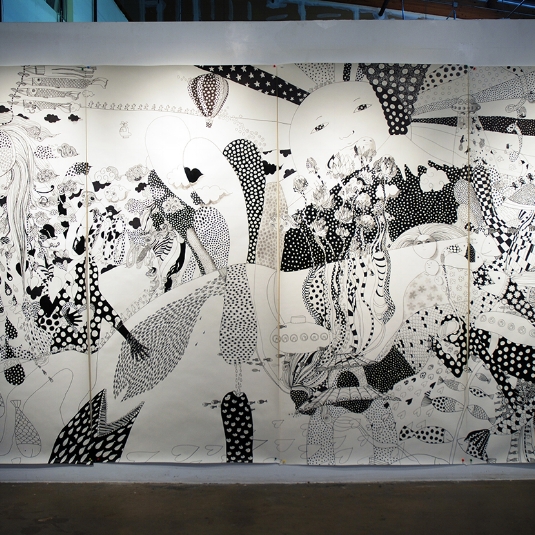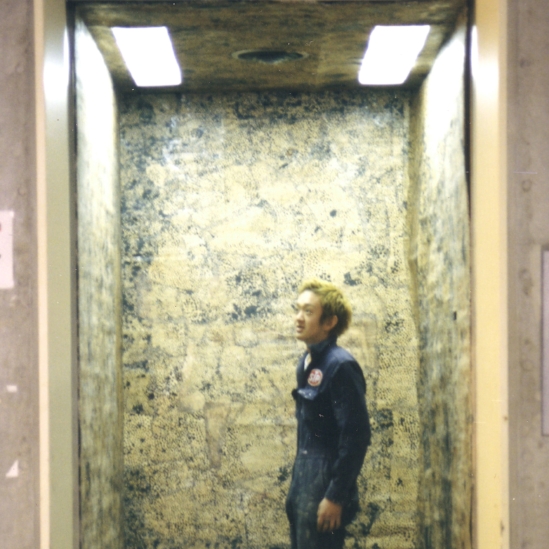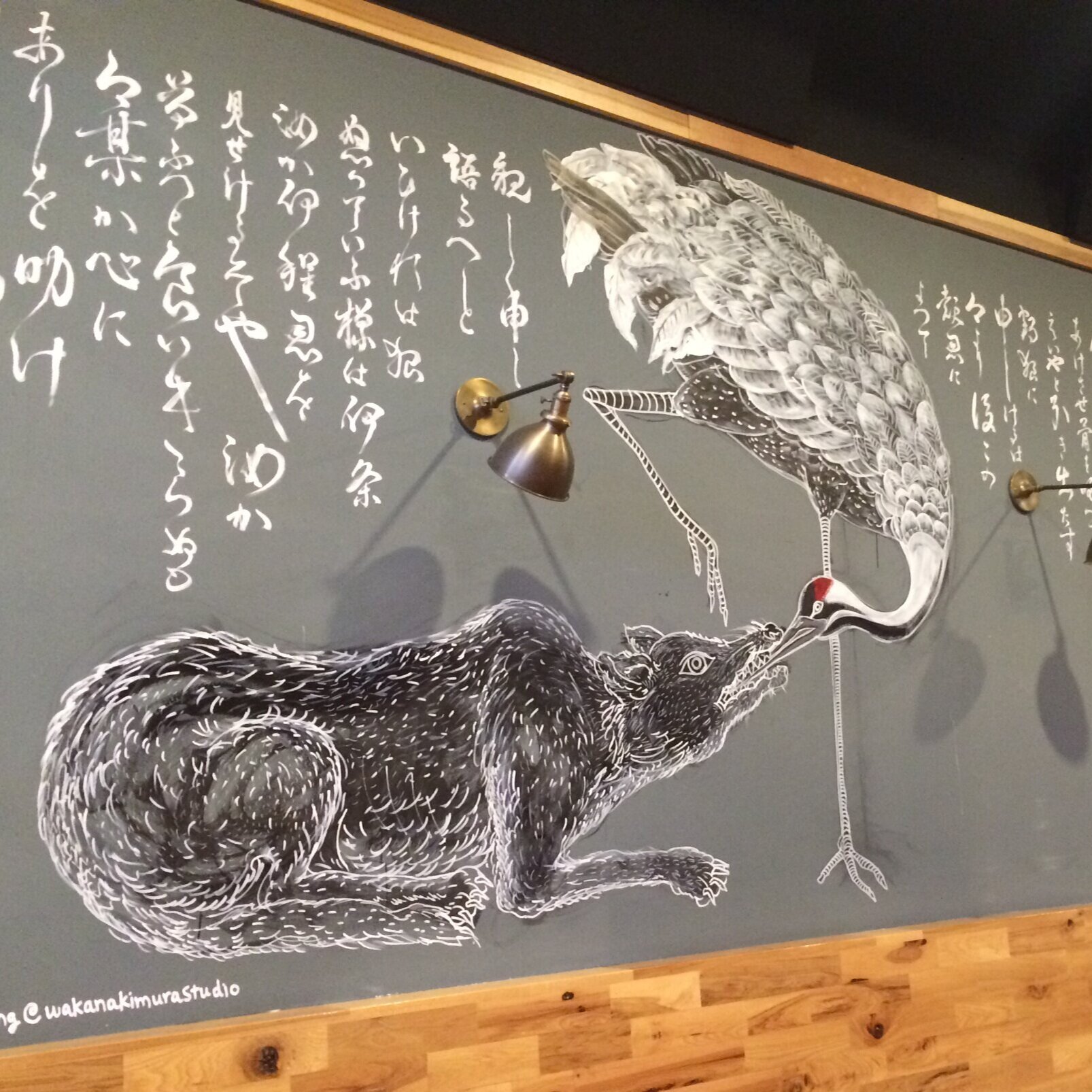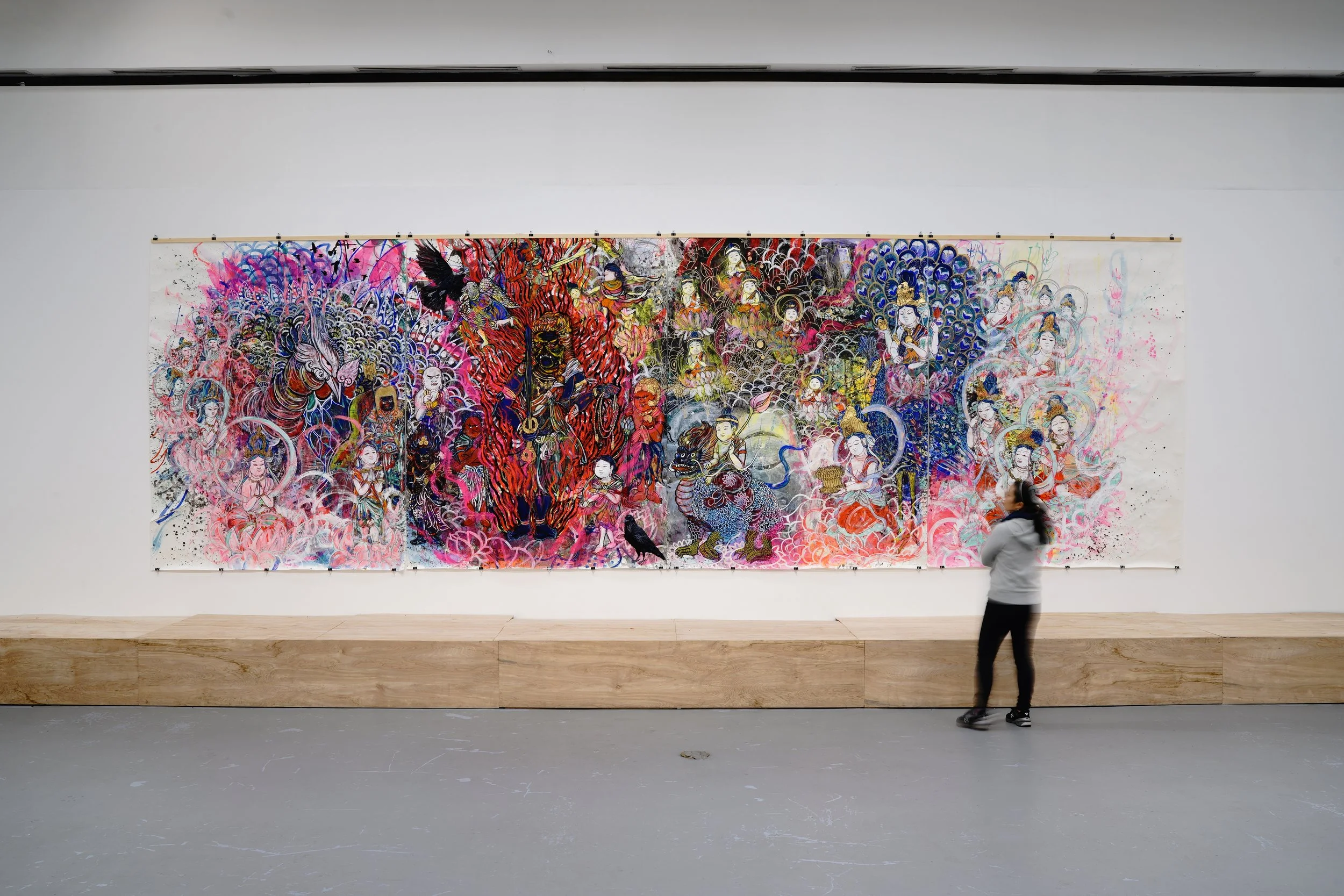
LA MANDALA, 2023, Mixed Media, 314in x 102in (consists from 4 panels)
"LA MANDALA" from 2023 is at the Patricia Sweetow Gallery in Downtown Los Angeles. The work can be viewed by appointment only.
2023年の作品の「LA MANDALA」は、ロサンゼルスのダウンタウンにあるパトリシア・スウィートウ・ギャラリーにて、予約制で特別鑑賞できます。 お気軽にご連絡ください。
Patricia Sweetow Gallery
1-213-265-7471
contact@patriciasweetowgallery.com








The Dynamic Buddhist Paintings of Wakana Kimura
By Meher McArthur
Out of a swirling mass of black ink brushstrokes appear a fearsome blue figure, with bulging eyes and fangs, wielding a sword in one hand and a rope in the other. This is Fudō Myō-ō, "The Immovable One," one of the most powerful and beloved deities in Japanese Buddhism. One of the five Kings of Mystical Knowledge and the wrathful counterpart of the Cosmic Buddha, Fudō symbolizes firmness of spirit and the determination to destroy evil.
As in all her Buddhist paintings, Wakana Kimura portrays Fudō in this new work, LA Mandala, according to iconographic conventions, while also adding her own youthful, dynamic style. Traditionally, Fudō is surrounded with a halo of flames. Here, Kimura sends flame-like jets of red pigment stabbing outwards into the darkness, where they intersect with delicately drawn gold wave patterns, lotuses and other traditional Japanese motifs. The overall effect is a tornado-like, artistic mash-up, both abstract and figural, Western and Eastern, old and new.
Kimura’s approach undoubtedly arose from an evolution in her own artistic and cultural perspectives working for over 15 years in the United States and recently back in Japan again. After receiving a BFA from the Tokyo University of the Arts, Kimura moved to Los Angeles and entered Otis College of Art and Design, where she studied Western abstraction, focusing on color, tone and mark-making, and earned an MFA in 2011. At the end of her time at Otis, she was searching for something new in her work and turned to Japan’s rich artistic heritage, choosing to incorporate Japanese motifs into her work as her “markings.” Since then, many of her larger works have been an assemblage of traditional Japanese imagery and pattern, often featuring deities and symbolism drawn from Buddhist iconography.
In her 2015 recent painting One trifle-beset night, t’was the moon, not I, that saw the pond lotus bloom (a poem written by Japanese Buddhist priest Saigyō [1118-1190] and translated by David McLeod), a Buddhist deity is almost concealed within Kimura’s vividly colored abstraction. At the heart of the four-panel, horizontal painting is the bodhisattva Samantabhadra (Japanese: Fugen) on an elephant. Fugen is considered by many Buddhists to represent action and practice, while his brother, Manjushri, who rides a lion, represents spiritual insight. Here, amidst strong black calligraphic lines and washes of turquoise and lapis pigment, Kimura outlines the details of the elephant, the deity’s robes and the striations of the lotus petals on his throne with the painstaking precision of ancient Buddhist temple artists. But she covers the creature’s head and legs in tiny dots and embellishes his body with lotus flowers, transforming the elephant and deity into ghost-like elements within an abstract composition.
To create these works, Kimura undergoes a sort of mixed-media meditation. As her ritual tools, she uses marker pens and sumi ink, watercolor, vinyl and acrylic on washi paper. Beginning at the center of the paper and then working outward, she builds up the image layer by layer. “Each mark has its own unique identity,” she explains, “and each mark interacts with another mark in its own unique way. All of the marks together represent an individual conceptual structure.” Her placement of the various motifs and patterns evolves naturally as the image expands outward from the central sheet, in a sort of ripple effect. “As with drops of rain in a pond, each drop forms a concentric circle that joins with another concentric circle. Each mark enables communication and creates conversation.”
Kimura has recently been commissioned by Buddhist temples in Japan and in Little Tokyo in Los Angeles to create paintings for specific ceremonies. She also recently completed a residency at a temple in Echizen, where she produced an installation of a mandala (a pattern representing a perfected Buddhist realm), formed of paintings of deities hung in the main temple hall. In traditional Japanese Buddhist paintings, rules have been strict about size, proportions and colors, in order to ensure that the paintings possess the spiritual power of the Buddhist deities. While adhering to these rules with the firmness of Fudō, Kimura also injects her own energy to conjure dynamic mixed-media work that offers a new take on ancient Asian spiritual imagery.

check more works from the links below…
画像をクリックすると詳細がご覧になれます。


